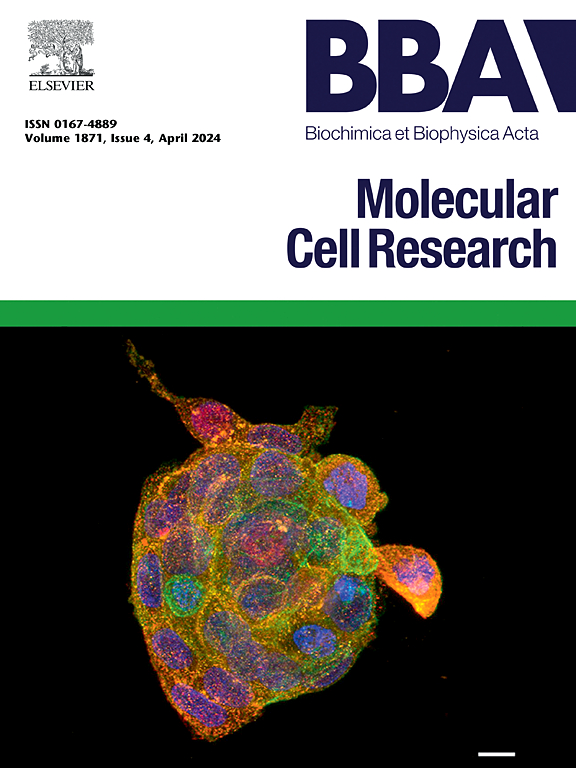Are connexin hemichannels playing any role in cancer?
IF 3.7
2区 生物学
Q1 BIOCHEMISTRY & MOLECULAR BIOLOGY
Biochimica et biophysica acta. Molecular cell research
Pub Date : 2025-06-28
DOI:10.1016/j.bbamcr.2025.120013
引用次数: 0
Abstract
Connexin (Cx) hemichannels have emerged as key regulators of both physiological and pathological processes. They exhibit a dual role in cellular function: while low-to-moderate activity supports cell-to-cell communication, excessive hemichannel opening can be detrimental, leading to cell death. In the context of cancer, the contribution of Cx hemichannels remains poorly defined. However, evidence from various models suggests that their activity may critically influence cancer progression. For example, Cx hemichannels mediate the release of signaling molecules such as ATP, which, upon conversion to adenosine, contributes to immunosuppression within the tumor microenvironment (TME). Notably, the activity of Cx hemichannels is modulated by several intracellular and extracellular factors—many of which are disrupted in tumors—suggesting that their regulatory dynamics in cancer may differ substantially from those under homeostatic conditions. This review aims to explore the potential roles of Cx hemichannels in shaping the TME, promoting immune evasion, and facilitating tumor progression. Given their putative relevance, future studies should focus on elucidating how cancer-associated alterations in regulatory mechanisms affect Cx hemichannel activity and whether such activity contributes to tumor aggressiveness. A clearer understanding of these processes may uncover novel therapeutic opportunities targeting Cx hemichannel regulation in oncology.
连接蛋白半通道在癌症中起作用吗?
连接蛋白(Cx)半通道已成为生理和病理过程的关键调节因子。它们在细胞功能中表现出双重作用:虽然低至中等的活性支持细胞间的通信,但过度的半通道开放可能是有害的,导致细胞死亡。在癌症的背景下,Cx半通道的作用仍然不明确。然而,来自各种模型的证据表明,它们的活性可能对癌症的进展产生关键影响。例如,Cx半通道介导ATP等信号分子的释放,ATP转化为腺苷后,有助于肿瘤微环境(TME)内的免疫抑制。值得注意的是,Cx半通道的活性受到几种细胞内和细胞外因子的调节,其中许多因子在肿瘤中被破坏,这表明它们在癌症中的调节动力学可能与在稳态条件下的调节动力学有很大不同。本文旨在探讨Cx半通道在形成TME、促进免疫逃避和促进肿瘤进展中的潜在作用。鉴于其推测的相关性,未来的研究应侧重于阐明癌症相关的调节机制改变如何影响Cx半通道活性,以及这种活性是否有助于肿瘤的侵袭性。对这些过程的更清晰的理解可能会发现肿瘤中针对Cx半通道调节的新的治疗机会。
本文章由计算机程序翻译,如有差异,请以英文原文为准。
求助全文
约1分钟内获得全文
求助全文
来源期刊
CiteScore
10.00
自引率
2.00%
发文量
151
审稿时长
44 days
期刊介绍:
BBA Molecular Cell Research focuses on understanding the mechanisms of cellular processes at the molecular level. These include aspects of cellular signaling, signal transduction, cell cycle, apoptosis, intracellular trafficking, secretory and endocytic pathways, biogenesis of cell organelles, cytoskeletal structures, cellular interactions, cell/tissue differentiation and cellular enzymology. Also included are studies at the interface between Cell Biology and Biophysics which apply for example novel imaging methods for characterizing cellular processes.

 求助内容:
求助内容: 应助结果提醒方式:
应助结果提醒方式:


